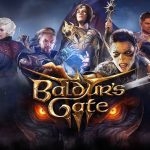TRIBHUWAN UNIVERSITY
2074
B.B.S. 4 Yrs. Programme / I Year / Full Marks: 100
Business Economics (MGT) Time: 3 hrs.
Candidates are required to give their answers in their own words as far as practicable.
The figures in the margin indicate full marks.
Group “A”
Brief Questions Answer
Attempt ALL questions.
- What is meant by authorised and the subscribed capital of a company?
- Write the meaning of cash from investing activities.
- Define the term “Minority Interest”.
- Differentiate between operating and financial leverages.
- Distinguish between absorption and amalgamation.
- The following information is provided:
Opening stock Rs. 50,000 Wages Rs. 50,000
Purchases 190,000 Closing stock 65,000
Required: Cost of goods sold.
- The following details have been given to you:
Sales Rs.900,000 Cost of bought in materials and service 410,000
Wages and salaries Rs.360,000 Rent received 40,000
Required: Value added statement.
- A subsidiary company has Rs. 10,00,000 equity share capital of Rs. 100 each. Out of these, the holding company acquired 7000 shares @ Rs.150 each.
Required: Ratio of interest between holding company and minority shareholders.
- A company provides you the following particulars:
Monetary assets Rs.50, 000 Monetary liabilities Rs. 60,000
During the period prices rise by 20%
Required: General price level gain or loss on holding monetary item.
- The following cash flow of the company is given.
Year CFAT
- (100000)
- 20000
- 30000
- 40000
- 20000
- 30000
Required: Pay back period.
Group “B”
Short Questions Answer [5X10 = 50]
Attempt FIVE questions.
- (a) Explain in short the causes of description.
(b) The following particulars of a strong company Ltd. Are provided to you :
Rs.
- Depreciation Adjustment 150,000
- Cost of sales Adjustment 45,000
- Monetary working capital adjustment 30,000
- Increase in the value of fixed Assets 200,000
- Increase in the value of inventories 55,000
- Gearing ratio 25 percent
Required: Amount of current cost Amounting Reserve
- (a) Explain in short the objectives of financial statement analysis.
(b) The following particulars are extracted from the records of a company:
- Current Ratio 2 : 1
- Inventory Turnover ratio 2 times
- Inventory 100000
- Debtors 125000
- Gross Profit Margin 25%
Required: (a) Sales Amount (b) Debtors Turnover
(c) Amount of Gross Profit (d)Amount of Current liabilities
(e) Quick Ratio
- The Capital structure of Kathmandu company Ltd. Is as follows:
- 15000, ordinary shares of Rs.100 each Rs.80 per share paid.
- 1000, 10% preference shares of Rs.100 each fully paid.
The various creditors amounted to Rs. 80000 including Rs. 25000 for secured creditors and Rs. 10000 for preferential creditors. Liquidator’s remuneration is fixed as 2% on assets realised and 3% on amount distributed to unsecured creditors. The expenses of liquidation amounted to Rs. 5000. Preference dividend is arrears for two years.
Required: Liquidator’s final statement of Account
14. Yellow Company is absorbed by Brown Company. The balance sheet and other information is as under:
| Liabilities | Rs. | Assets | Rs. |
| Equity share at Rs. 100 each
General Reserve Profit and loss Account 10% Debentures Accounts Payable |
1200,000
200,000 150,000 100,000 300,000 |
Plant & machinery
Furniture Closing stock Sundry Debtors Cash at Bank |
800,000
300,000 200,000 400,000 250,000 |
| 1950,000 | 1950,000 |
Agreement of two companies are as follows:
- Brown company takes over all assets and liabilities of yellow company.
- The debenture holder of yellow company agreed to take the debenture of Brown company with 15% premium.
- The Brown company issued three shares of Rs. 100 each at an agreed market value of Rs. 150 per share for every two shares of yellow company.
Required: (a) Purchase consideration
(b) Realisation Account in the books of yellow company
(c) Shareholder’s Account in the books of yellow company.
- The following are the income statement and balance sheet at the end of 2071.
| Income statement | Rs. | Rs. |
| Sales:
Less: Cost of goods sold: |
450,000
200,000 |
|
| Gross Margin
Less salary Rent Operating expense Interest on debenture Depreciation Loss on sales of plant (Book value Rs. 20000) |
60,000 30,000 20,000 10,000 30,000
5000 |
250,000
155,000 |
| Net Profit before tax | 95,000 |
Balance Sheet
| Liabilities | 2070 | 2071 | Assets | 2070 | 2071 |
| Share capital | 200,000 | 300,000 | Plant | 200,000 | 250,000 |
| Retained earning | 40,000 | 50,000 | Investment | 100,000 | 100,000 |
| 10% Debentures | 100,000 | 50,000 | Debtors | 40,000 | 50,000 |
| Creditors | 20,000 | 30,000 | Stock | 30,000 | 25,000 |
| Bank overdraft | 40,000 | 20,000 | Cash | 30,000 | 25,000 |
| 400,000 | 450,000 | 400,000 | 450,000 |
Required: Cash flow statement Showing cash from operating, inventing and financial activities.
- Briefly explain the advantages of business combination and point out the importance of internal reconstruction of existing company.


 - [Resolving the Adventure Not Found Error in For the King 2](#) - [Understanding the Purpose of the Hardwork Skill in For the King 2](#) Upon liberating the prisoner from the cart in The Resistance chapter, the world unfurls for exploration. Roam the area until you chance upon an overturned wagon distinct from the prisoner cart, nestled in the Foothills area of the map. Should the wagon remain elusive, lean on Vision Scrolls or Find Distance items, available in town shops, dropped by enemies, or carried by specific characters such as the Scholar. Employ these tools to meticulously scrutinize the Foothills. Continue your exploration of the Foothills until you stumble upon the broken wagon. Once uncovered, assign any of your party members to investigate – no battle ensues, sparing your entire party from involvement. A notification will prompt you to the exact location of the Bandit Camp, where Hildegard's husband is being held captive. Liberate him from the camp to successfully fulfill this objective. These are the crucial steps to unraveling the mystery of Hildegard's husband in For the King 2. If you found this guide beneficial, consider exploring our diverse range of other informative guides.](https://meropaper.com/wp-content/uploads/2024/01/for-the-king-2-hildegard-husband-cart2-150x150.webp)





 - [Resolving the Adventure Not Found Error in For the King 2](#) - [Understanding the Purpose of the Hardwork Skill in For the King 2](#) Upon liberating the prisoner from the cart in The Resistance chapter, the world unfurls for exploration. Roam the area until you chance upon an overturned wagon distinct from the prisoner cart, nestled in the Foothills area of the map. Should the wagon remain elusive, lean on Vision Scrolls or Find Distance items, available in town shops, dropped by enemies, or carried by specific characters such as the Scholar. Employ these tools to meticulously scrutinize the Foothills. Continue your exploration of the Foothills until you stumble upon the broken wagon. Once uncovered, assign any of your party members to investigate – no battle ensues, sparing your entire party from involvement. A notification will prompt you to the exact location of the Bandit Camp, where Hildegard's husband is being held captive. Liberate him from the camp to successfully fulfill this objective. These are the crucial steps to unraveling the mystery of Hildegard's husband in For the King 2. If you found this guide beneficial, consider exploring our diverse range of other informative guides.](https://meropaper.com/wp-content/uploads/2024/01/for-the-king-2-hildegard-husband-cart2.webp)


